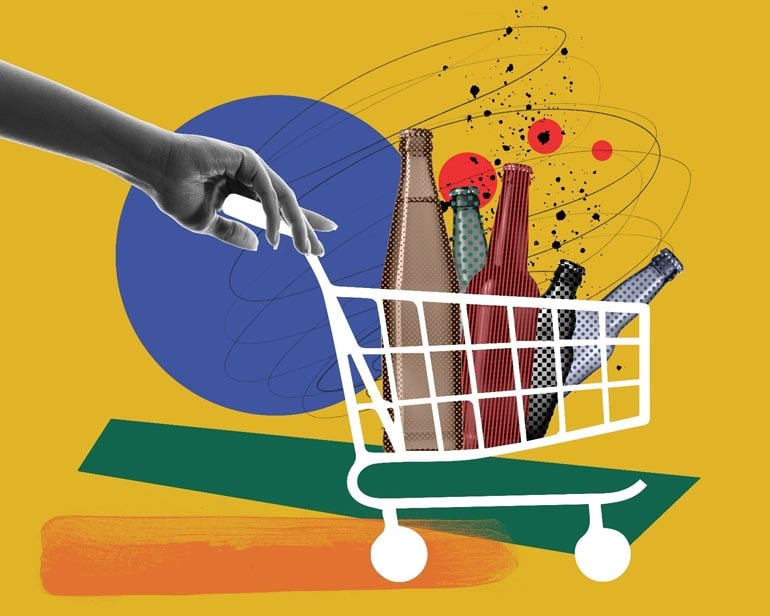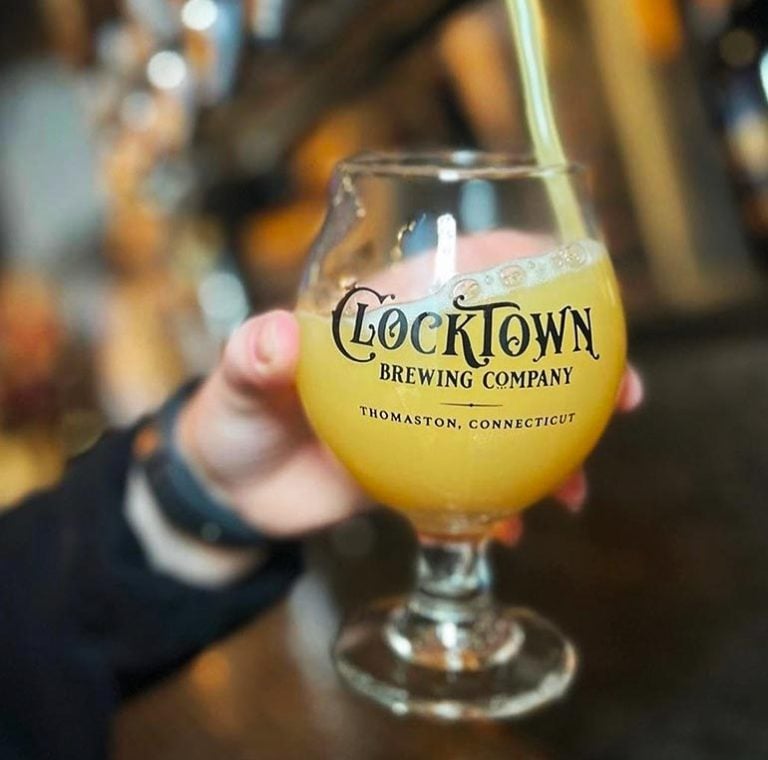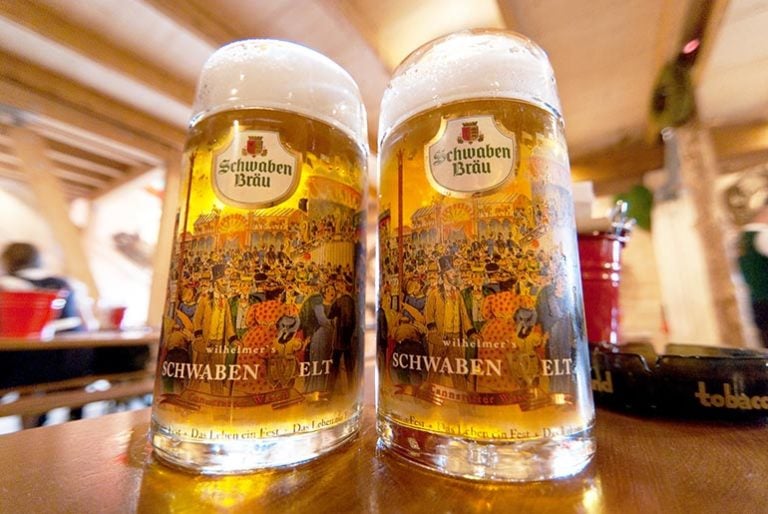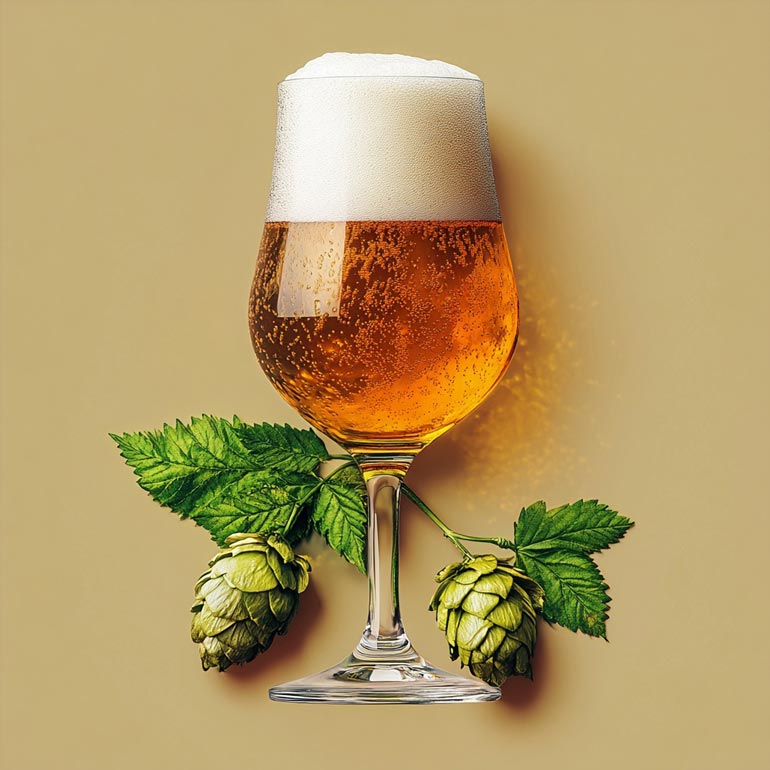The Global Impact of COVID-19 on the Beer Industry
COVID-19 has dramatically reduced beer production and consumption around the world, hitting craft and independent…

COVID-19 has dramatically reduced beer production and consumption around the world, hitting craft and independent brewers extremely hard. Almost everywhere, taprooms and pubs that provided a base of support for the majority of smaller businesses have been shuttered or reduced to carry-out and delivery operations only.
Even a bump in “to-go” sales will not make up for the loss of revenue from taproom and retail sales, said Mary Macdonald, executive director of the Ohio Craft Brewers Association.
“No one is in an appreciatively better situation based upon their size or age when a significant portion of their sales opportunities, via their own taproom, bars or other retailers, are either closed or have extremely restricted sales opportunities right now,” added Macdonald in a late March interview with Rick Armon of the Akron Beacon Journal.
On the plus side, grocery stores, bottle shops and online alcohol sales have seen a spike in the demand for beer. In the third week of March, market research firm Nielsen saw U.S. alcoholic beverage sales rise 55 percent. The U.S. is already the world’s second-largest beer market, and once widespread quarantining became the norm, online alcohol sales rose by 243 percent and beer sales jumped 34 percent. It is unclear whether the surge will continue. In certain countries, including Mexico and South Africa, sales increases were due to panic-buying before federal governments shut down alcohol production.
Customers have also shown more interest in buying beer through alternative channels during the COVID-19 lockdown. These include direct-from-brewery shipping, curbside pick-up from breweries and restaurants, and alcohol delivery apps like DoorDash in the U.S. and Deliveroo in Britain. Brewers who set up such arrangements before shelter-in-place orders were issued have a distinct advantage.
A late March survey by the Brewers Association found that 99 percent of over 938 respondents from craft and independent breweries had been affected by the pandemic. More than 90 percent of respondents saw a decline in onsite sales, with 87 percent having closed their taprooms or brewpubs. Close to 60 percent saw a dip in distributor orders and about 88 percent experienced cancelled events.
Hard work and government assistance, including loans, grants and extensions of sales tax payments, are unlikely to be enough to help small breweries stay in business. In early April, a Brewbound survey of 455 respondents across 49 states and Washington D.C. found 46 percent of independent and craft brewers indicated they would likely close within three months.
It is not just small, craft breweries that are being affected. In Canada, Molson Coors Beverage Company announced in late March that it withdrew its financial outlook for 2020 and beyond. Around the same time, Labatt Breweries of Canada said it would shift production from beer to hand sanitizer at five manufacturing facilities. Like many large brewers and distillers who are using their alcohol to produce hand sanitizer, Labatt is donating the sanitizer to frontline workers. Labatt is also donating sanitizer to Food Banks Canada as well as restaurants and bars that have remained open.
![]()
Brewer Concerns from Belgium to Brazil
Similar scenarios involving significant dips in sales and expanded delivery services are unfolding across Europe and Australia. Belgian microbreweries, including Brussels-based En Stoemelings, are bringing customers cases of beer by bike. Salford, Britain-based Seven Brothers Brewery and its sibling brand, Four Sisters Distillery, opened a gin and beer drive-through stand. Sydney-based Akasha Brewery is using an existing fleet of vans to deliver freshly brewed beer to still-open bottle shops.
Asian brewers and markets were hit earlier and harder. Although Wuhan, China began easing restrictions in early April as COVID-19 cases in the area dwindled, China’s lockdowns seriously affected on-premises consumption and beer sales for large gatherings for the Lunar New Year. China is the world’s largest beer market. In late February, Anheuser-Busch InBev reported it lost about $170m in Chinese earnings in January and February. The company told Financial Times reporters George Hammond and Judith London a rise in e-commerce sales was the single bright spot. In Thailand, 47 of the country’s 77 provinces engaged in a short-term ban of alcohol sales, some until April 15, and others until April 30. The purpose of the ban was to discourage gatherings for the Thai New Year, which is traditionally celebrated between April 13 and 15.
Throughout Africa and Latin America, large and small brewers saw severe losses.
Nigeria’s federal government continued to allow alcohol production, but imposed travel restrictions between states. This limited producers’ abilities to transport alcohol from breweries to stores. In addition, some Nigerian states instituted curfews, which further discouraged sales. In Mexico, the world’s sixth-largest beer market, the governors of the states of Tabasco, Yucatán, Sonora, Quintana Roo, Campeche, Aguascalientes and Nuevo León restricted or banned alcohol sales. Mayors in other Mexican cities restricted hours for alcohol purchases.
Brazil, the world’s third-largest beer market, was set to expand its premium beer industry this spring. In mid-March, Ambev, the Brazilian unit of Anheuser-Busch InBev, announced it would invest about $382m to open a new brewery in northern Brazil. Shortly afterward, Ambev stated it would utilize the alcohol at one of its breweries in Rio de Janeiro to produce hand sanitizer rather than beer. Also in mid-March, Heineken had expected to invest about $183.14m to expand its Ponta Grossa plant in southern Brazil. Both Ambev and Heineken’s plans for expansion may be modified or delayed because of the COVID-19 pandemic.
![]()
Potential Moves for Large Brewers Post-COVID
For every small brewery that closes, the large brewers that remain will have access to the business’s talent and share of the market. The change was already coming before the pandemic. In 2019, over 300 small and independent brewers closed in the U.S. This was the largest number of closures of such brewers in a single year.
In the coming months, there is likely to be a drop in the diversity of beers available as the stock of craft beers is depleted. Since most bars, restaurants, and taprooms are still closed, beer sales for both large and small brewers are likely to remain lower than usual. The industry may see off-premises surges through grocery stores, bottle shops, e-commerce sites and delivery apps as government restrictions ease in late spring and summer.
Large brewers are likely to resume the production of perennial favorites, with some exceptions. China is set to produce and sell more premium beers. In late March, China Resources Beer, the country’s largest brewer, announced it would close breweries creating lower-priced products and increase output of Heineken.
Large brewers may rely on 2019 sales figures from craft breweries to make beers that build on last year’s craft beer trends. Offerings will likely include hazy IPAs, lagers, brews with coffee ingredients and sour beers, which saw U.S. sales up about 40 percent in 2019. It is likely that large brewers will come to favor cans. Pandemic-related safety concerns have paused on bottle and can returns. Some brewers are pooling supplies of bottles. Yet even large brewers like Sleeman Breweries, Canada’s third-biggest brewer, are short on bottles.
“We don’t have enough bottles in our plants to run at normal levels. We’re still producing beer. We still have bottles, just not as many as we would like,” said John Sleeman, founder of Sleeman Breweries, in a late March interview with Jake Edmiston of the Financial Post.
![]()
With Taprooms Closed, Breweries Turn to Digital Methods
Small breweries that hang on are likely to temporarily shift away from relying on taprooms to support their bottom lines. For the foreseeable future, sports remain cancelled and only small gatherings may come to be allowed in late spring and beyond. Grocery stores and bottle shops remain reliable points of sale. Independent and craft brewers are working hard to establish relationships, transport products, or find distributors to ensure their goods can be found in stores.
Small breweries are also forming partnerships to share bottles, pool labor and other resources and collaborate on advertising strategies. Both small and large breweries are turning toward digital and TV ads to showcase new beers, encourage responsible alcohol use, and remind customers to be safe and engage in social distancing.
Craft breweries are also looking online. There’s been a flurry of organization to establish virtual happy hours and drinking parties as well as online tastings and beer festivals. In early April, Breckenridge Brewery in Denver held an online dance party that tried to involve customers on many levels. The party was held through Zoom, an online meeting app, and featured a themed background, music by a DJ and a contest for best costume and best dance floor with product giveaways to boot. Customers also had the ability to donate to the Food Bank of the Rockies through the brewery’s Facebook Live stream.
Breweries are also sharing beers for spring, with plans to continue releasing new beers into summer. Flying Dog Brewery in Frederick, Maryland described its reinvented pale ale “Night Putting” as “a versatile and easy-to-drink option for afternoons on the course…and on the couch.”
One of the big questions for the coming months will be how the hop industry and breweries left standing will address a potential glut of hops. Throughout the world, hop production has increased significantly in the past three years. In the U.S. alone, production for Idaho, Oregon, and Washington, the three main hop-producing states, totaled a record high of 112 million pounds, which was up 5 percent from the 2018 crop. With many independent and craft breweries suddenly out of the market, growers are reaching out to brewers to ensure crops do not go to waste. Crosby Hop Farm, a Marion, Oregon-based grower, said it is addressing concerns by offering U.S. brewers free shipping, extended payment terms, and one-on-one hop contract analysis.
“Even in a time of physical separation, we are all interconnected and must act quickly and responsibly to support our communities,” said Blake Crosby, chief executive officer of Crosby Hop Farm, in a press release.
“We are committed to doing our part to lessen the impact by offering more flexible financial terms for our customers who we consider part of the Crosby Hops family. Our hope is that these measures help make it easier for craft brewers experiencing hardship to keep on brewing.”
















Comments 0
No Readers' Pick yet.